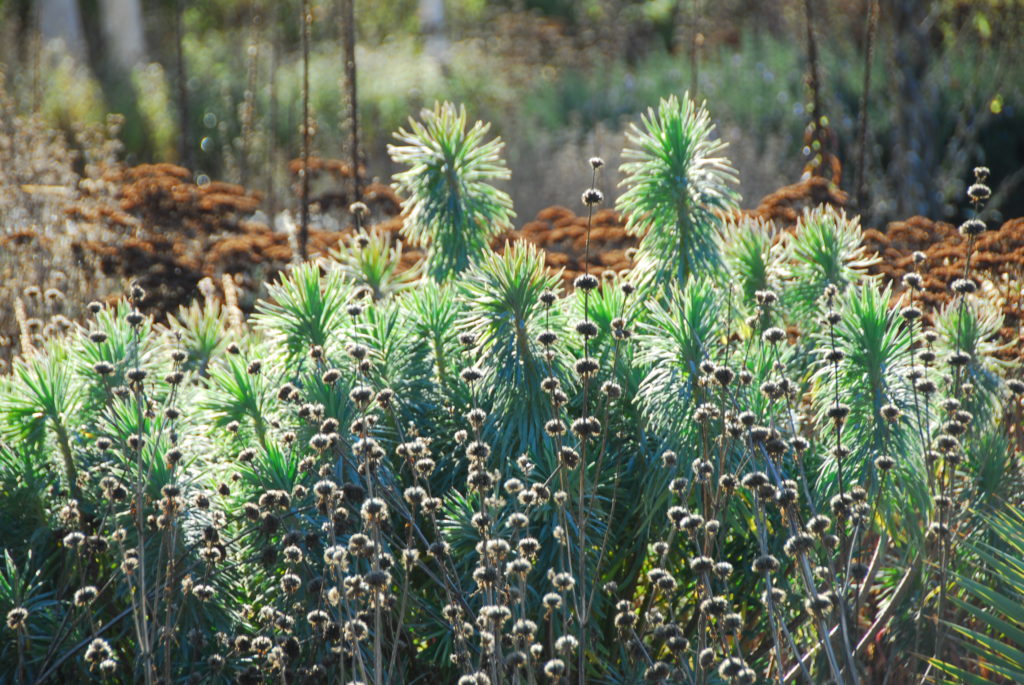I remember being blown away when James Van Sweden, speaking in Melbourne in 1989 about his huge plantings of perennials in the USA, told us that many of his clients found that their favourite season was winter. They were surprised by this discovery. He was equally surprised.
After all, it’s the time when there’s nothing in flower, the perennials are dormant, and all that’s visible are the skeletons and seed-heads of the previous summer’s growth.
Personally, I love the floral high point in mid summer (which Piet Oudolf, the great master of these plantings, confesses that he finds just a bit too colourful in the recent doco ‘Five Seasons’ about his work). I also love the build up to this climax, in which a great billowing sea of fresh foliage is spangled with bloom, along with the slow descent at the other end of the season, which is altogether tireder and more fatigued, but in a way that is perfectly seasonally apt.
The winter show, for me, has never been much more than a consolation. But a great consolation it is. It’s at its best when rimed with frost, of course, and just after sunrise. And at it’s worst when waterlogged and overhung by low-hanging, leaden skies. But I’m never in a hurry to cut it back when new growth is starting to push through in Spring.
As a consolation show, it has never occurred to me to place plants specifically for their winter juxtapositions, but I’m moving in that direction. For it’s clear that there’s an easy classification in winter colouring, including the browns, the silvers, the straws and the blacks.

It’s likely, without thinking, that you’ll find yourself with browns (such as the rich, warm, coffee-grind colouring of Sedum seed-heads) and straws (like most of the Miscanthus, and several other grasses). It’s less likely, given their relative scarcity, that you’ll accidentally have the blacks appearing (best provided by the spherical knobs of Rudbeckia and Echinacea) or the silvers (best represented by Perovskia (Russian sage)). But both are worth chasing.
Then, of course, there’s the highly valuable representation of green. My current conviction is that it’s important that green is visible somewhere – whether amongst the planting and provided by plants such as Euphorbia characias ‘wulfenii’ (as in many of these pics), or in a background hedge. It’s like a colour datum – a reference point – against which all those straws, browns, silvers and blacks can sing. Maybe it simply provides reassurance that the whole thing isn’t simply dead. Either way, it’s invaluable.


I was blown away by Nobbies View – a plant nursery midway between Somers and Flinders here in Vic. Perfect clear winter sun lit up his magnificent display of all the creams, silvers, straw, caramels, browns and blacks and I resolved to do exactly the same. Well worth a visit, lovely bloke too. Mine is still bulking up, needs some drastic editing, but hasn’t disappointed. Never really considered planting for senescence before.